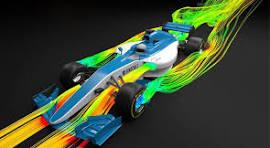Engineering challenges
Engineering in Formula 1 presents some of the most complex challenges in motorsport, as teams
constantly push the boundaries of technology, performance, and reliability. Engineers must design
cars that are not only incredibly fast but also meet strict regulations on safety, weight,
aerodynamics, and power unit efficiency. Balancing downforce and drag is a constant battle—too much
downforce slows the car on straights, while too little reduces grip in corners. Packaging components
tightly for optimal airflow without overheating is another major difficulty, especially with the
hybrid power units that combine internal combustion engines with energy recovery systems. Every
component, from suspension to gearbox, must be built to endure high stress while remaining as
lightweight as possible. On top of that, the car must perform consistently across a wide range of
tracks, temperatures, and weather conditions, making F1 engineering a relentless pursuit of
precision, innovation, and adaptability.
DRS system
The Drag Reduction System (DRS) in Formula 1 is a technology designed to aid overtaking by reducing
aerodynamic drag. It works by opening a flap on the rear wing, which decreases downforce and allows
the car to gain speed on straights. DRS can only be used in designated zones on the track and under
specific conditions—most commonly when a driver is within one second of the car ahead. While it
doesn’t guarantee an overtake, DRS gives drivers a temporary speed boost, making wheel-to-wheel
racing more competitive and exciting.
